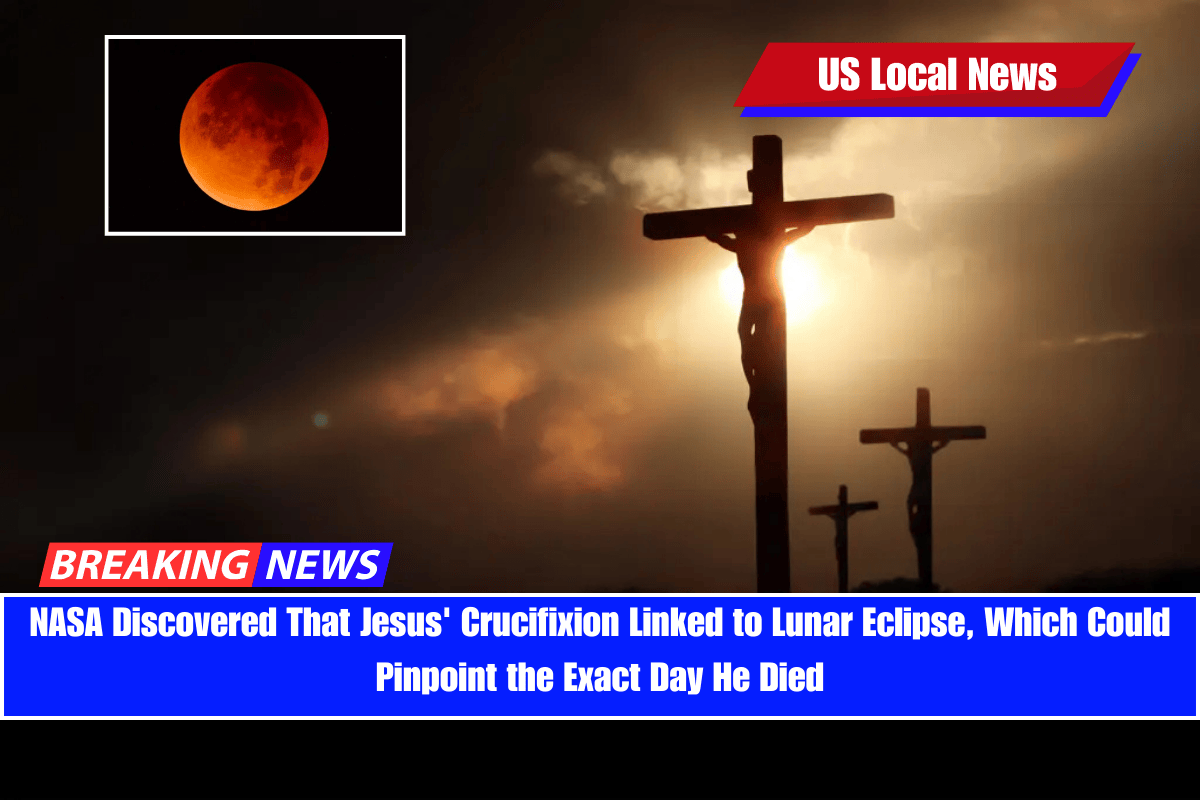It wasn’t just the heavens weeping—a recent NASA discovery may add a cosmic twist to one of the most powerful moments in the Bible: the crucifixion of Jesus Christ.
Using astronomical models, NASA researchers have confirmed that a lunar eclipse—which would have caused the moon to appear blood red—was visible over Jerusalem on Friday, April 3, 33 AD, a date widely believed by scholars to be the day Jesus was crucified.
A Lunar Eclipse, the “Blood Moon,” and the Crucifixion
During a lunar eclipse, the Earth blocks sunlight from reaching the moon, casting a shadow that gives the moon a reddish tint—often called a “blood moon.”
This rare celestial event appears to mirror biblical descriptions. In the Gospel of Matthew 27:45, it says:
“From noon until three in the afternoon, darkness came over all the land.”
This moment is described as Jesus hung on the cross. And now, NASA’s sky-tracking data backs the theory that something extraordinary happened in the sky that day.
The Science and the Scripture Align
The eclipse theory was first suggested by Oxford University researchers Colin Humphreys and W. Graeme Waddington. They believe that a partial lunar eclipse, visible just after sunset on April 3, 33 AD, could explain why ancient texts mentioned the moon turning red and the sky darkening.
NASA’s advanced astronomy tools confirm that this lunar eclipse was, in fact, visible in Jerusalem shortly after Jesus’s reported death.
Biblical Prophecies That Mention a Blood Moon
This discovery is also getting attention on social media, especially TikTok, where users are linking the eclipse to biblical prophecies.
One such prophecy is from Acts 2:20, spoken by the Apostle Peter just weeks after the crucifixion:
“The sun will be turned to darkness and the moon to blood before the coming of the great and glorious day of the Lord.”
Peter was quoting from the Old Testament, specifically Joel 2:31, which said:
“The sun shall be turned into darkness, and the moon into blood, before the great and terrible day of the Lord comes.”
Many scholars debate whether these verses refer to Jesus’s return or his crucifixion, but researchers like Humphreys and Waddington suggest they might describe what people actually saw on that day.
More Support from Ancient Texts
Even texts outside the Bible echo similar descriptions. A writing from the New Testament apocrypha, known as the Report of Pilate, says:
“At his crucifixion the sun was darkened; the stars appeared and… the moon appeared like blood.”
According to the researchers, this aligns closely with NASA’s data, helping piece together a moment where scripture and science seem to agree.
Good Friday, Easter, and the Moon’s Role
Good Friday, the day Christians remember Jesus’s death, always falls just before Easter Sunday. This timing is based on the first full moon after the spring equinox, connecting Christian tradition to the Jewish Passover, during which Jesus was crucified.
According to the Gospels, Jesus rose from the dead on the Sunday after Passover—and early Christians used the moon to decide when to celebrate Easter.
Now, this new finding from NASA is making many wonder: Was the sky trying to tell the story all along?











Leave a Reply